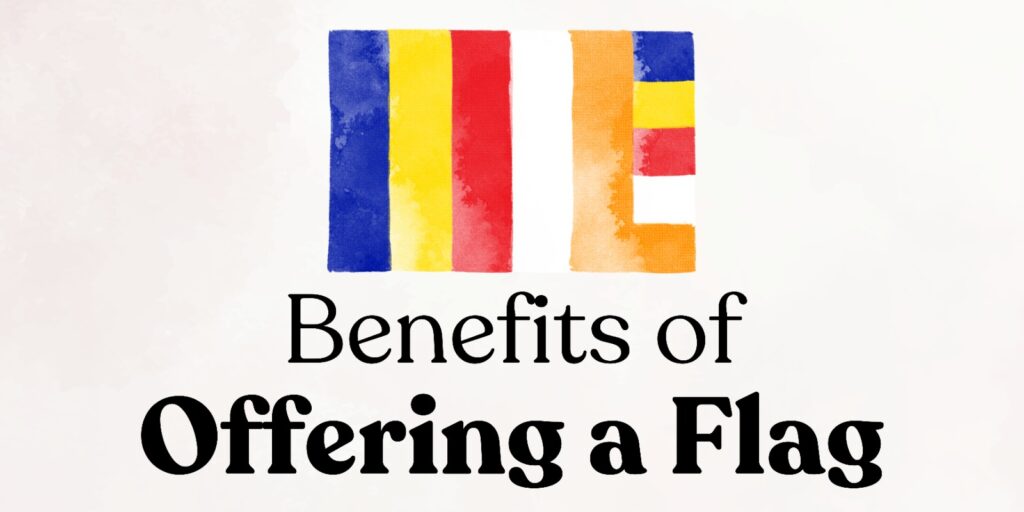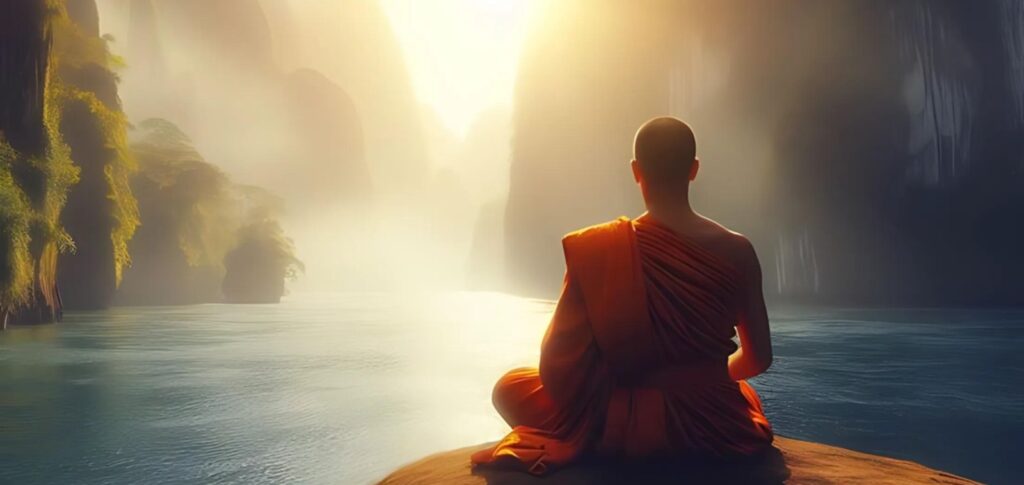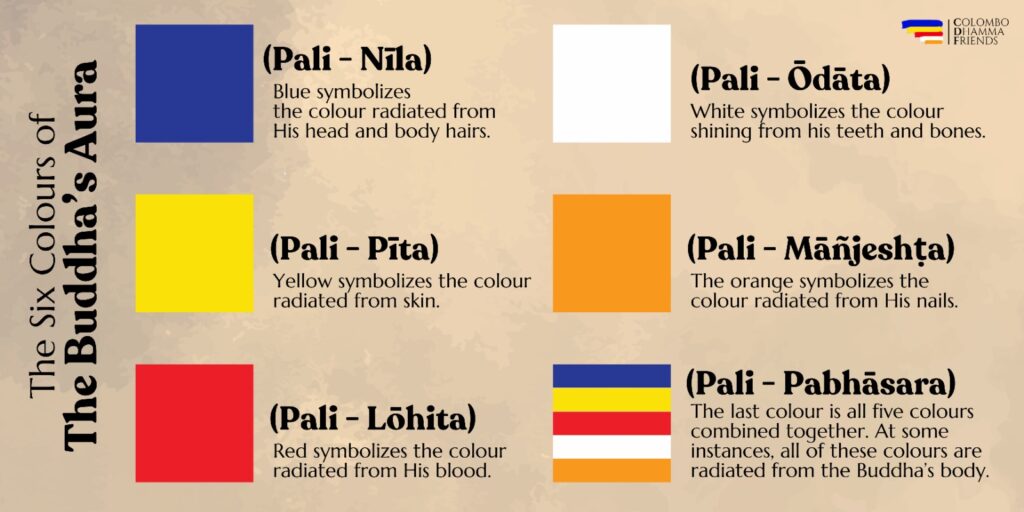
To honour the Buddha and the Arahants, disciples of the Buddha love to offer flags.
We make flag offerings and hang flags across the street.
People also popularly offer flags around stupas, beside bodhi trees and around shrine rooms containing statues.
Flags are an eye-appealing offering.
More importantly, flag offerings result in being repeatedly born as a high-positioned and well-liked person.

The Elder Venerable Upavāna
100 thousand aeons ago, the Padumuttara Buddha arose in the world.
After His Parinibbana, his relics were not dispersed everywhere like our Buddha. Instead it remained collected as one solid mass. Humans and devas joined together and enshrined the relics into one massive stupa.
A broke servant man who was living in Hamsavati, saw citizens devotedly offering various things to the stupa. He took his washed shawl (which he uses to cover his upper body) & hung it at the end of a bamboo pole as a flag ⛳ and planted it by the stupa.
After seeing that it was waving in the breeze, he was delighted!
With much excitement, he approached an elder monk and inquired about what benefits might be gained with this flag offering.
The elder monk then explained the benefits in this way:
- One is constantly secured with the fourfold army, namely elephants🐘, horses🐴, chariots and foot soldiers 🥷🏼. This is a result of the flag offering.
- Always surrounded by as many as 60 thousand instruments 🎻 and decorated drums 🪘. This is a result of the flag offering.
- Surrounded by 86 thousand women 👩🏻, all with glowing blue skin, decked with fancy clothing 🥻 and jewellery 💎. Well-obedient, neither tall nor short, neither oversized nor skinny, middle-sized, all with a moderate smile. This is a result of the flag offering.
- 30 thousand aeons experiencing joy in a heavenly world ☁️
- 80 times as the king of deities 👑
- Thousands of times as a wheel-turning monarch 🫅🏻
- Innumerable times as a regional King 🫅🏻

100 thousand aeons later, under the Okkāka Clan, the Gautama Buddha will appear in the world.
At that time, a very meritorious Brahmin having left the heavenly world, will be born.
Leaving behind many servants, slaves and 800 million in wealth, he will be ordained as a monk.
He would be a disciple of the Gautama Buddha of the Sakyan clan, named Upavāna.
This is a proclamation of the elder venerable Upavāna (Apadana Pali).

What does the colours in the Buddhist Flag mean?
- Blue (Pali – Nīla): the colour radiating from the head and body hairs.
- Yellow (Pali – Pīta): the colour radiating from the skin.
- Red (Pali – Lōhita): the colour radiating from blood.
- White (Pali – Ōdāta): s the colour shining from his teeth and bones.
- Orange (Pali – Māñjeshṭa): the colour radiating from His nails.
- All 5 Colours Combined (Pali – Pabhāsara): The last colour is all five colours combined together.
In some instances, all of these colours radiate from the Buddha’s body.
Just like when the Buddha descended from Tavatimsa to the human world (Sankassa) after preaching to Mathru deva (the mother of the Buddha) having taught the Abhidharma.
Another example was when Sumana the florist was amazed when seeing the Buddha’s aura and offered jasmine.